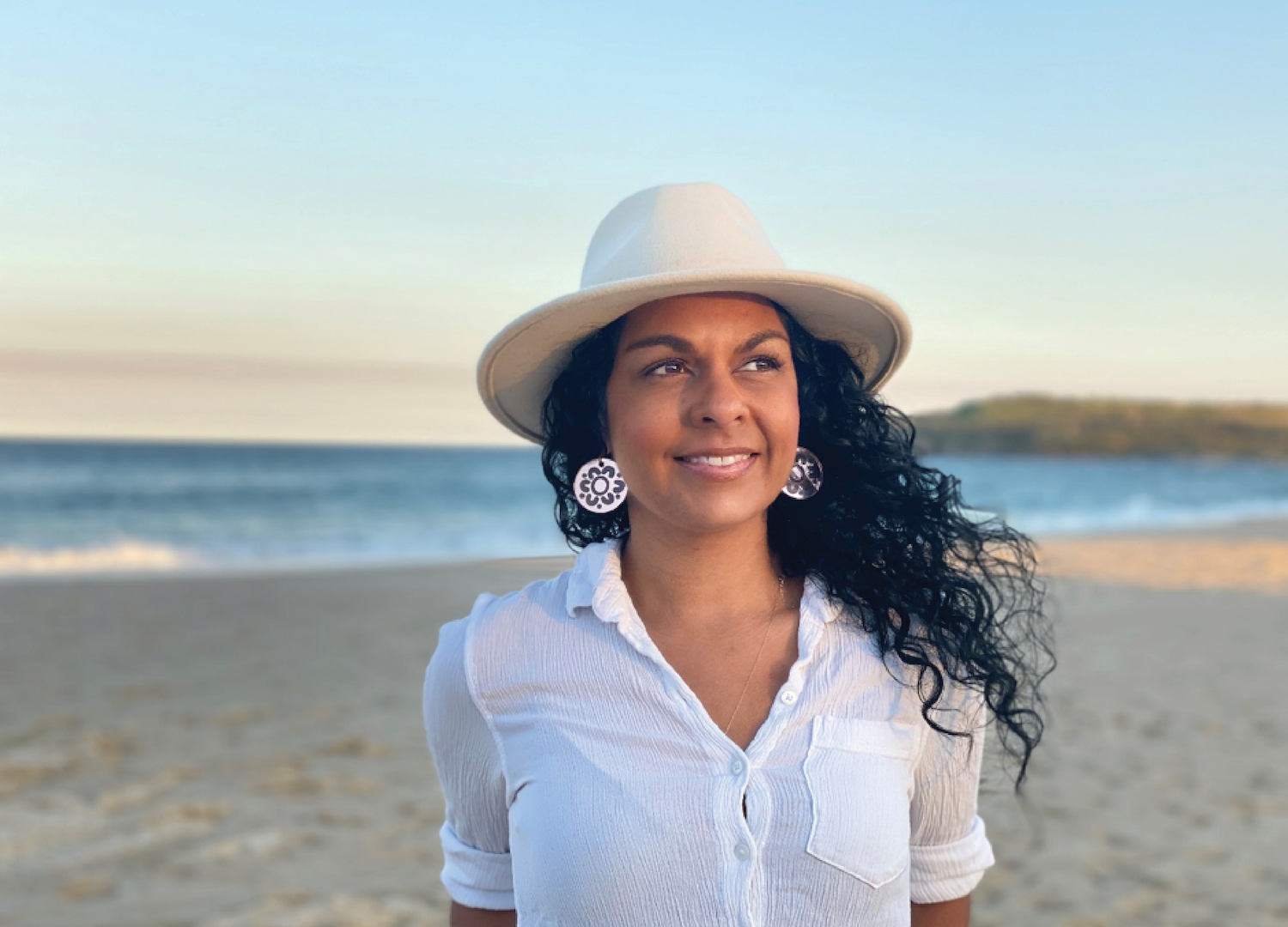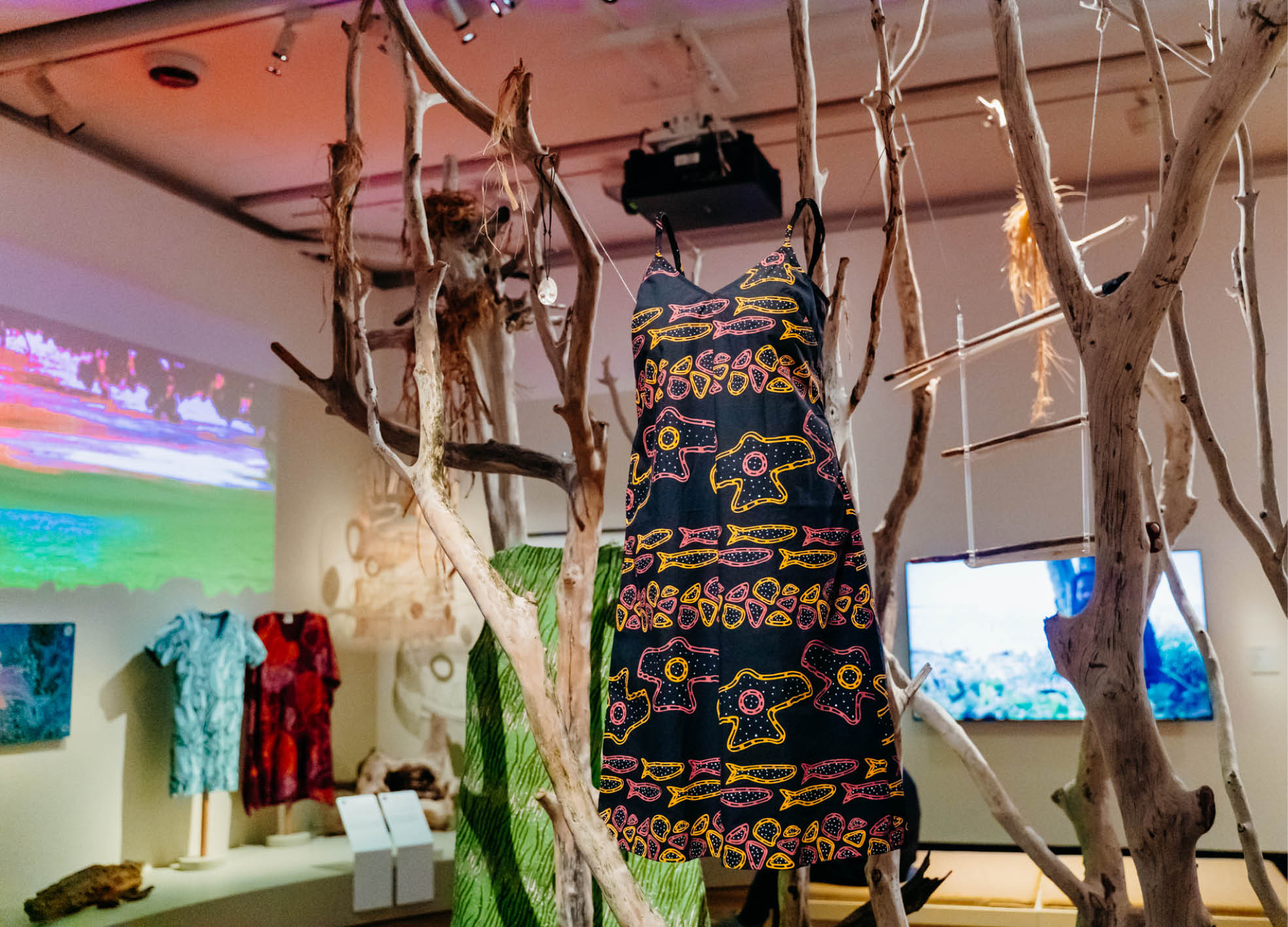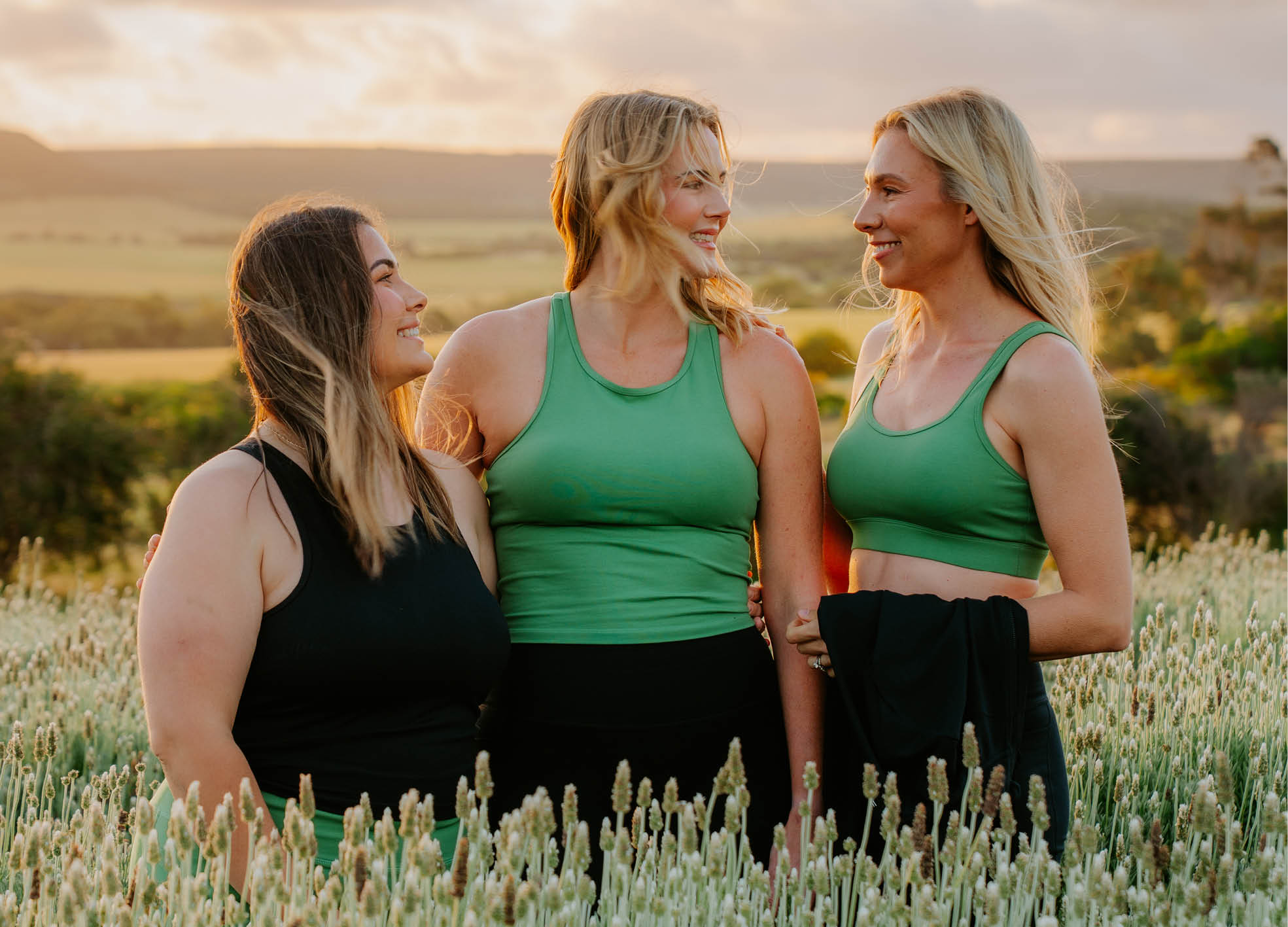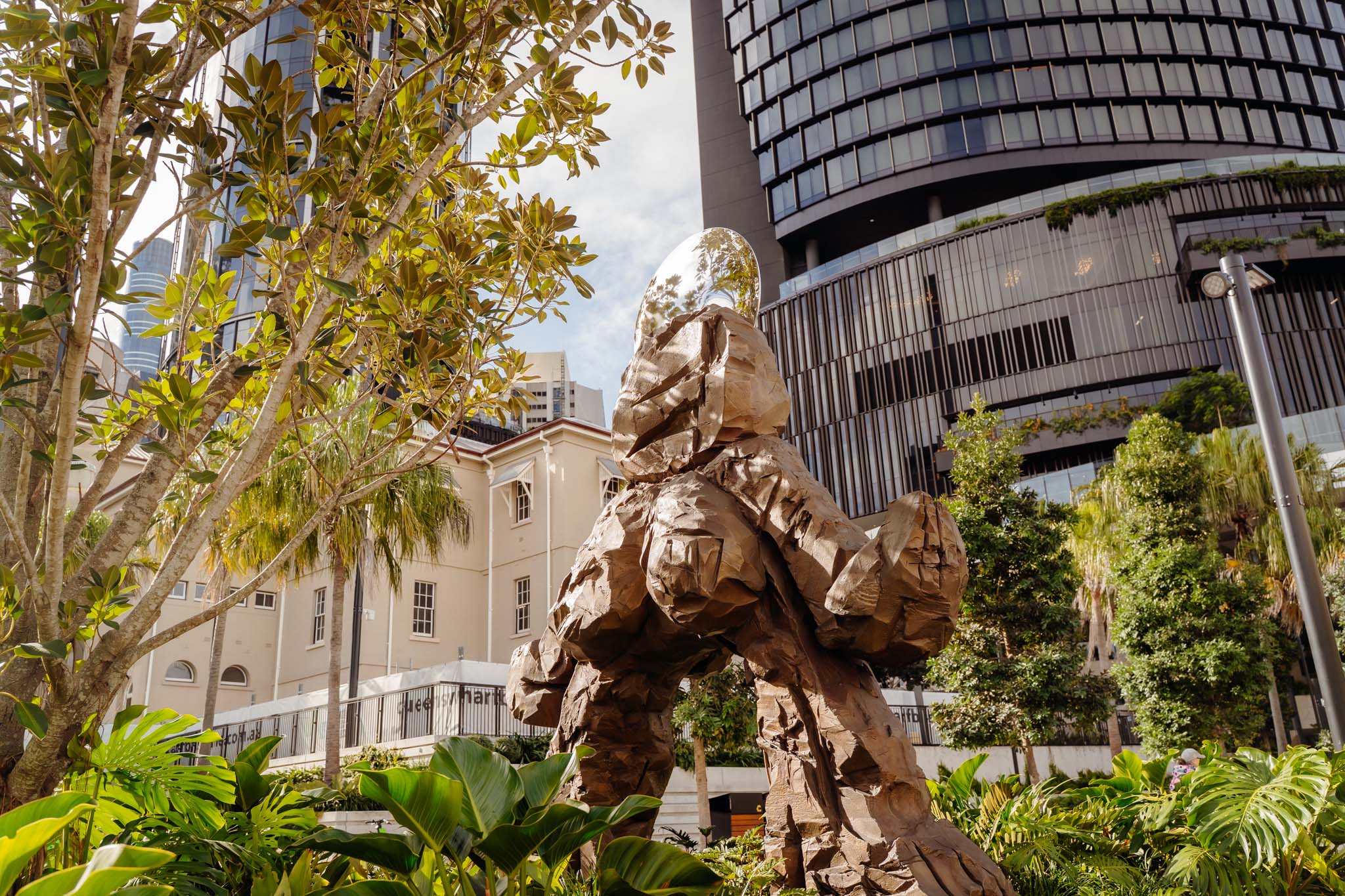Voice, A New Vision: The Process and Principles of a Referendum

- Words by Peppermint
words TEELA REID artwork LAUREN ROGERS
This year will see a referendum called for First Nations constitutional recognition through an Indigenous Voice to Parliament. In Issue 57, our team had the honour of working alongside Wiradjuri and Wailwan lawyer Teela Reid as she penned the feature ‘Voice, A New Vision’.
“The idea to enshrine a First Nations Voice is one of the systemic changes mandated in the Uluru Statement from the Heart: ‘We call for a First Nations Voice to Parliament enshrined in the Constitution.’ That is the invitation the Australian people have overwhelmingly accepted at the heart of the Uluru Statement – to enshrine a First Nations Voice,” Teela writes.
“It invites the Australian people to ‘walk with us’ towards a First Nations Voice and a Makarrata Commission. A Makarrata Commission would supervise a process of treaties and truth-telling. Makarrata is a Yolngu word meaning ‘coming together after a struggle’. This is the vision for a better future and the mandate formulated by a cross-section of the First Nations community.”
As part of Peppermint’s commitment to sharing valuable resources and amplifying First Nations’ voices, over the next few weeks, we will be publishing this feature online in full so it is free for all to access. Here, Teela explains the process and principles of a referendum.

above TEELA REID BY JAKAYLA REID
What is a referendum?
A referendum is a mandatory vote required to amend the Australian constitution. The question will require a simple yes or no response. You will not be voting on the model of the Voice, but you will be asked whether or not it ought to exist.
Establishing a First Nations Voice enables the many different First Nations an opportunity to be heard on the issues affecting their communities. It is as simple as saying nothing about us, without us!
What is the Voice?
A First Nations Voice to Parliament is a modest idea that will have a profound impact on our nation. The Uluru Statement from the Heart mandates it must be “a First Nations Voice” enshrined in the Australian constitution. It is a request for a representative body in the Australian constitution – a Voice that is elected by and for First Nations peoples. This is crucial given First Nations politicians represent the interests of their political parties – whether that be Labor, Liberal or the Greens. Establishing a First Nations Voice enables the many different First Nations an opportunity to be heard on the issues affecting their communities. It is as simple as saying nothing about us, without us! It is also an incredible opportunity to listen and learn from the many First Nations peoples that have lived on this continent since time immemorial.
Why do we need to have a referendum?
First Nations peoples were intentionally omitted from Australia’s constitution in 1901. In 1967, a referendum enabled the federal parliament to make laws with respect to Aboriginal and Torres Strait Islander peoples, but it did not allow us a Voice in those laws.
A referendum process provides an opportunity for the Australian people to guarantee the First Nations Voice be established. A constitutionally enshrined First Nations Voice ensures the Voice is durable and there is certainty for First Nations input into laws and policies beyond the unpredictability of government cycles. A referendum process provides an opportunity for the Australian people to respond to the Uluru Statement from the Heart, and gives the First Nations Voice public legitimacy. A referendum secures its function within the democratic process, irrespective of which government wins an election.
A constitutionally enshrined First Nations Voice ensures the Voice is durable and there is certainty for First Nations input into laws and policies beyond the unpredictability of government cycles.
It is important to understand that for the referendum to be consistent with the Uluru Statement, the Australian government must act in good faith and put to the public a vote on a question on the “First Nations Voice”. This process resets the balance of power between the people of Australia and the First Nations. It is simply the beginning, and not the endpoint, to building a better future for our nation. One that is based on the self-determination of First Nations peoples to influence the laws and policies that affect our lives.
The status quo is not working. Consecutive governments have failed to Close the Gap and improve the lives of First Nations peoples. A fundamental change is necessary to ensure the voices of First Nations peoples are centred in policy decisions that affect their communities. The architecture of our society is formed by the structures that have the power to tell our nation’s story – it is why it is so important to create a First Nations Voice.
What are the steps to this process?
Step One
The Australian government puts to the people a question broadly asking:
A Proposed Law to alter the Constitution to recognise the First Peoples of Australia by establishing an Aboriginal and Torres Strait Islander Voice. Do you approve this proposed alteration?
Step Two
The public votes on the referendum question.
Step Three
If YES, passed by a double-majority of the Australian population, the Voice legislative design process is underway with First Nations communities.
If NO, the referendum fails. The only option left is for the government of the day to legislate.
https://www.instagram.com/p/CoCUOStvL7X/
Will First Nations sovereignty be ceded?
A First Nations Voice enshrined in the Australian constitution cannot cede First Nations sovereignty. The first issue with understanding “sovereignty” is that it can mean different things to different people. How settlers define sovereignty can be different to how First Nations peoples express and enforce their sovereignty. To some it might be an individual right, to others it might be a collective right. The essential point to be made is that no western law can ever cede First Nations sovereignty.
The essential point to be made is that no western law can ever cede First Nations sovereignty.
How will the Voice effect change?
The Australian constitution is a document that stipulates the separation of powers. It mandates there must be separate legislature, executive and judiciary powers as fundamental pillars of our democracy. These are written into the constitution as principles: it does not include models or details of how these function – the details are outlined in legislation. The Australian constitution is the boundaries within which parliament can make laws, for instance, regarding tax.
A First Nations Voice within the Australian constitution would provide a powerful mechanism for checks and balances on parliament and the government of the day that currently do not exist. But it would only relate to the boundaries within which parliament makes laws in relation to Aboriginal and Torres Strait Islander people.
A First Nations Voice would provide the framework for Makarrata, the process required to engage in treaty-making for the many different First Nations. Treaties are creatures of legislation, they require the time to negotiate the terms and conditions. Without a First Nations Voice, they are inevitably vulnerable because they rely on the good faith of the government of the day to uphold their promises.
JOIN OUR MAILING LIST
Brighten up your inbox with our not-too-frequent emails featuring Peppermint-related news, events, competitions and more!
explore
More articles
When you hang a painting on a wall, the story stays put. But when you wear a beautifully made garment that may as well be a piece of art? The story travels. It moves through the world with you –…
We all do it: fire up the car for a 5-minute drive to pick up groceries, drop off sewing supplies, or run a quick errand…
Here’s a question: who decided that natural fibres aren’t a great fit in activewear? For Geraldton mum-of-four Jade Payne, that question became paramount after a…
Fancy a getaway in a heritage building that was once a hospital, an orphanage AND a school in a previous life? Despite what your initial…
When the algorithm gods reward dance trends over hand-thrown ceramics, and building a website feels more stressful than a tax return, where’s a maker to…
Time-travelling lungfish floating in a mosaic of glass tiles, a four-breasted female empowerment goddess cast in bronze, and a striking botanical sculpture spanning 15 metres,…
Hang out with us on Instagram
“Crafting is something that has come naturally since I was small and I just haven’t stopped. When I was smaller, I was interested in the end result. As I’ve gotten older, I realise it’s the process that keeps me coming back to craft. It’s a meditative state for me and I find the repetitive action of the stitching and felting quite therapeutic.”
Craving a world filled with warmth and whimsy? It’s all in a day’s work for textile artist @Cat_Rabbit, whose latest book, ‘Trinkets’, is bursting with felty food friends to make and cherish. Cat invited us into her universe, filled with cheeky characters, layered storytelling and loads of humour.
Plus: try the super sweet pattern for Cat’s Lucky Pickle, perfect to make as a stocking stuffer, extracted from Trinkets.
Read more from our ‘Just felt right’ feature in Issue 64, at newsagents and stockists now!
Photos: Tatanja Ross @On_JacksonStreet and Cat Rabbit
#PeppermintMagazine #CatRabbit #LuckyPickle #Craft #Crafting #Felting #FeltCrafts #Trinkets #ChristmasDecorations

Our hearts go out to everyone impacted by the Bondi Beach violence, especially the Jewish community. Also to the beachgoers, those who bravely helped and the first responders.
While it`s easy – and understandable – to get caught up in the horror of it all and direct anger at certain groups, remember this quote from teacher and author Erin Gruwell: "Don`t let the actions of a few determine the way you feel about an entire group."
“You don`t fight racism with racism. You fight racism with solidarity," said Bobby Seale of the Black Panthers. And solidarity is exactly what we need right now.
If you are feeling overwhelmed, you are not alone. Remember there is much more kindness in the world than hate. ❤️🩹
@LifelineAustralia has created a Bondi Beach Incident: Wellbeing support guide, where you’ll find information about common reactions, reassurance that what you’re feeling is valid, and ideas for taking care of your wellbeing.
https://lifeline.org.au/bondi-incident
You can also call Lifeline on 13 11 14, text on 0477 13 11 14 or chat at lifeline.org.au/crisis-chat anytime, no matter how this has impacted you.
@BeyondBlueOfficial is also available with free 24/7 support by phone on 1300 22 4636 or webchat at https://www.beyondblue.org.au/
Register.Find.Reunite. has been activated by @RedCrossAu to help people reconnect with family and friends. Visit redcross.org.au to access the service.
@NSWPolice Public Information and Inquiry Centre (PIIC) is operating 24/7 on 1800 227 228 for information relating to people impacted.
@LifeBloodAu is supporting Sydney hospitals. O- and O+ blood are always in high demand in emergencies. To donate (from anywhere in Australia – all states are welcome and helpful!) call 13 14 95 or use the Lifeblood app.

Just a reminder… from @SugarHouseCeramicCo
This holiday season be kind, patient and shop local!
#ShopSmall #ShopLocal #SupportSmallBusiness

✨️ Our website is getting a glow-up! ✨️
Sorry for the inconvenience but it will be offline for a few days. You can still purchase subscriptions (perfect for chrissy presents!) via the links on the holding page.
Last year we were extremely excited to receive funding from the Meta Australian News Fund, in partnership with the Walkley Foundation. The result of this is a fabulous new website, with a sustainable fashion and sewing directory that will follow early next year. We`ve worked with the lovely Amy and Jenny at @CrumpetClubHouse who have been making the magic happen – we can`t wait to show you the outcome! ✨️
In the meantime, please get in touch if you need help with anything – hello@peppermintmag.com
We`ll see you on the other side! 🌈

🎀 12 DAYS OF XMAS GIVEAWAYS 🎀
🎄On the 12th day of Christmas, we’re giving away… a GREENPAN FROST ICE CREAM & FROZEN DRINK MAKER! 🎄
Ice, ice, baby! Calling all kitchen magicians and dessert devotees: it’s time to churn, blend and devour your way to frozen heaven. It’s our final giveaway – and hoo girl, it’s a goodie! Thanks to the clever folks at @TheOriginalGreenPan.Anz, one reader will cool their mitts on the Frost Ice Cream & Frozen Drink Maker – perfect for conjuring up home-made gelato, sorbet, smoothies, slushies and more!
Valued at $599, the Frost Ice Cream & Frozen Drink Maker is designed with GreenPan’s signature Thermolon™ ceramic non-stick coating, so you can whip up summer-ready sweet treats free of PFAS, PFOA, lead and cadmium.
To snag this frosty prize, follow @TheOriginalGreenPan.Anz and tag a friend in the comments below before midday AEST 15 December! (Australian and New Zealand addresses only, please.) Good luck!
Update: The lucky winner of our final giveaway is @just__for__van - congrats! We`ll dm to get your details. Well done! 🎉
#PeppermintMagazine #12DaysOfChristmas #12DaysOfGiveaways #GreenPan

Oh hey 👋🏼 Just a little reminder that our subscriptions are sent in paper envelopes, which is a bit of a rarity in our industry. 💅🏼
If you need more reasons to subscribe, how about these:
💌 Enjoy a new issue arriving in your letterbox every six months.
💌 Subscribers exclusively receive FOUR digital sewing patterns per year!
💌 You’ll be the first to get your hands (and needles) on our patterns with early access.
💌 Get a 20% discount code on back issues of Peppermint so you can start your collection today!
💌 Automatically go in the draw to win amazing prizes each issue.
💌 Feel good about your subscription arriving in plastic-free postage.
💌 Support a small, women-led Australian business.
💌 Help us make the world a better place!
And... it`s a perfect Christmas present! We have a downloadable card you can print to go with your gift.
💌 Link in bio!
#PeppermintMagazine #SupportSmallBusiness #ShopLocal #ShopSustainable #PlasticFree
















